Katherine's Biography
Elkins, W.V. 1930s
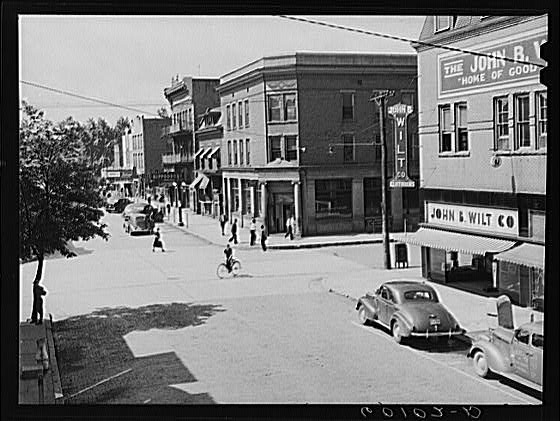
Courtesy of traveling219.com, Photo by John Vachon, from the Library of Congress.
Katherine came into the world December 2, 1937 following a long-standing maternal tradition of being born in Elkins, West Virginia.
Katherine Fletcher Lacy, a talented artist and editor, and Samuel Randolph Hoover, a biochemist, welcomed their baby girl into the world and returned to their loving home at 2017 Hillyer Pl NW, Washington, D.C. Their life was full of the city's hustle and bustle, the charm of living near Dupont Circle. A location so enjoyed that in retirement, Katherine's parents returned to their Hillyer Place home.
Katherine vividly remembers the first time she was struck by the beauty of music. At age three, she listened to a recording of Mozart being played on a Victrola for the first time, and the experience captivated her. Although her parents had no musical skills, they always supported her artistic interests. Katherine's passion for music ignited at a young age, and she even started reading music scores before learning to read words.
As World War II approached, their lives took a significant turn. The escalating world war impassioned Katherine's father to contribute more directly to the country's war effort. His discussions within the Department of Agriculture resulted in a transfer to the Eastern Regional Research Center north of Philadelphia. This new position was a better fit for his milk and egg pasteurization expertise and allowed him to support the war effort more directly.
Leaving their familiar surroundings, the family rented their home in D.C. and relocated to a two-family house on Linden Rd. in Wyndmoor, PA. Samuel could take advantage of proximity and walk to work at the research center. However, the move from the city to the suburbs significantly impacted Katherine's early years and her mother's life. The full extent of its consequences remains private.
Soon after settling into Linden Road, Katherine's father rescued a piano abandoned by neighbors moving away. Her father's clever gesture of offering a drink to the movers secured the instrument for Katherine . Thus, the family became the new owners of an out-of-tune piano with broken pedal action. Tuned, this instrument fueled her passionate and persistent pleas for piano lessons. At age five, her dreams materialized as she took formal piano lessons.
2017 Hillyer Place NW, Washington, DC.
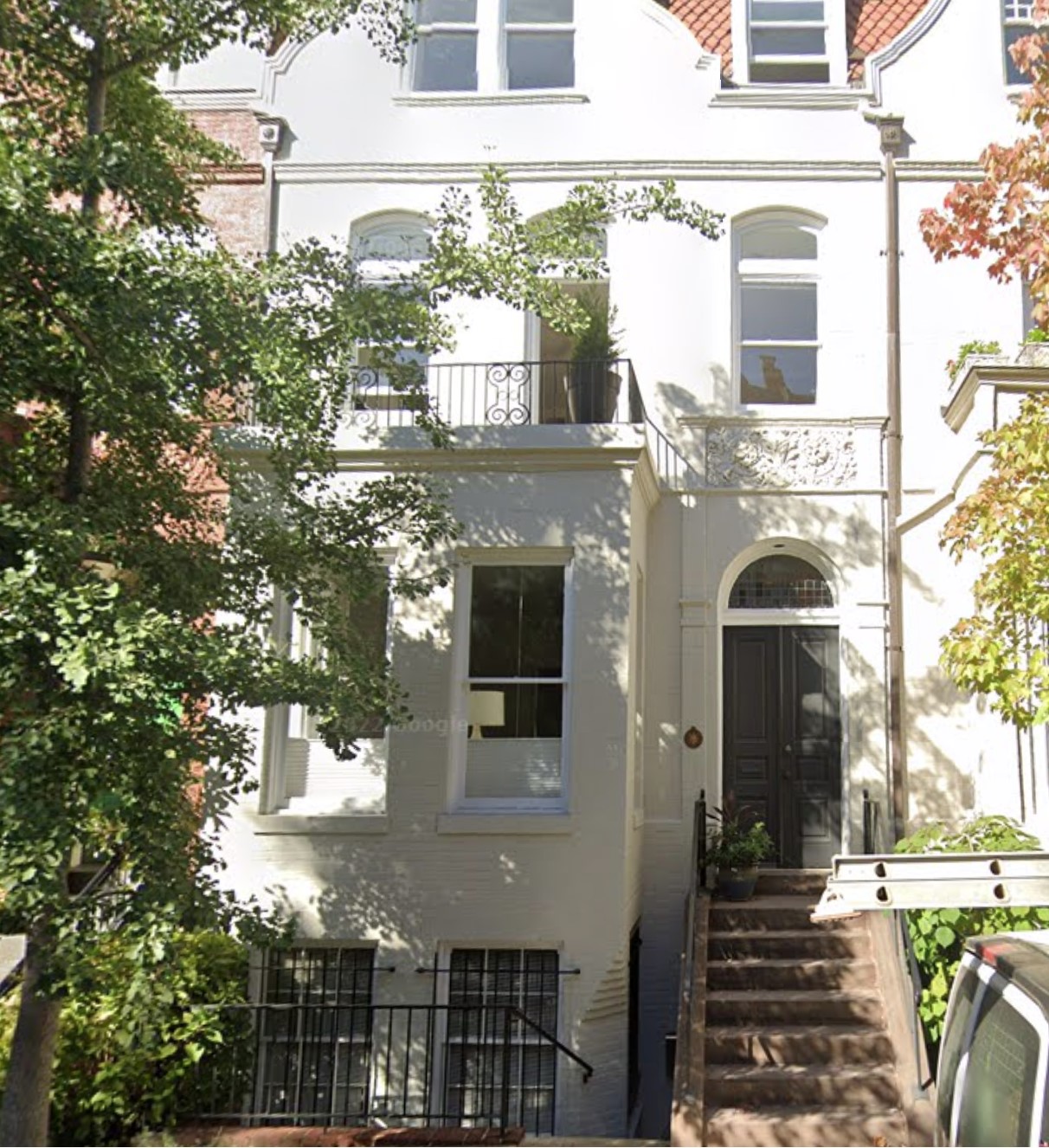
Courtesy of Google maps street view.
In her cherished memories, Katherine recalled early days with affection. Her parents engaged in a delightful game. As they strolled past the instrument, they would strike any combination of keys blocking the view of the keyboard. Then, turning to young Katherine to inquire about the notes they had just played. This practice, Katherine believes, contributed significantly to her development of perfect pitch—a rare and invaluable gift.
The subsequent steps in her journey continued in elementary school when her music teacher offered the clarinet. Not liking the biting, pressure, or key, she recalls being delighted being offered a flute. Flute lessons soon followed in school at age eight.
A rich musical education marked Hoover's Springfield Township High School years. She participated in various musical endeavors, including bands, marching bands, the Eastern Pennsylvania State Band, and as a member of the "Quintones" singers for five years. Her talent led to numerous radio and early television appearances.
Despite her enthusiasm, Katherine's parents could not envision music as a viable profession. Her family surmises it reflects the family's experiences from the Great Depression. Her parents' guidance toward academics contributes to be why Katherine refers to her parents as "nonmusical."
Later in life, when asked about the formal instruction received during her scholastic years, Katherine apologetically responded that she received "mediocre music instruction." For an artist like Katherine, her youth was filled with good basic instruction, but in hindsight she believes she could have benefited from a faster learning curve.
Katherine began her academics in 1955 at the University of Rochester, where she majored in general studies. In 1957, she transferred to the Eastman School of Music to pursue her passion to study flute with Joseph Mariano and music composition.
Eastman School of Music (1948 aerial view)
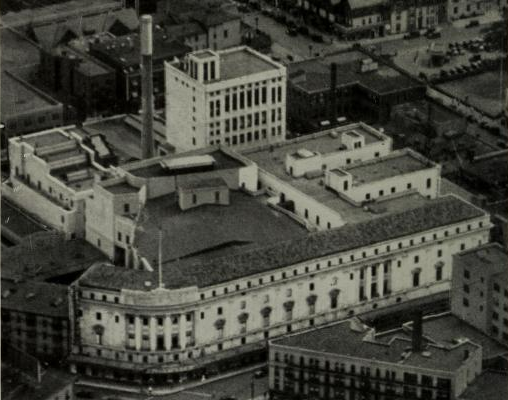
Publicity photo courtesy of The University of Rochester.
During high school, Katherine was unaware of renowned composers such as Nadia Boulanger, who had already taught in France for many years. These discoveries only added to her sense of isolation. Katherine expressed her discouragement at being the only woman in her undergraduate composition classes at Eastman, where she was often ignored. An interview with E. Grames delves into this topic in greater depth ((August 2016). "Women's Work - A Conversation with Composer Katherine Hoover" .Fanfare: The Magazine for Serious Record Collectors. pp. 82–98.).
Katherine was introduced to the American Flute School movement under the guidance of Joseph Mariano, a distinguished student of William Kincaid. Marino's status is easily understood, knowing conductors like Toscanini, Fritz Reiner, and Eugene Ormandy sought his talents throughout his career. To honor Joseph Mariano on his 90th birthday, Katherine composed "Celebration," quoting pieces she studied under his tutelage, such as Bach's Sonata in E and others that have become an essential part of their heritage as flutists.
Katherine earned a Bachelor of Music in Music Theory with honors in 1959. She accomplished a double major and was awarded the prestigious Performer's Certificate in Flute, which allowed her to perform solo with an orchestra. Dispite these notable achievements, she was disappointed with shortcomings within the undergraduate Music Composition department at that time.
It's uncertain which of three activitys Hoover engaged in first and last after graduating. Grames's interview does identify the events yet fails to clarify the chronology. Katherine suspected that she was William Kincaid's last student, so it makes sense to apply William of Ockham's razor here.
After graduating, Katherine likely studied with Agi Jambor first, a renowned flutist and teacher from Hungary. She then attended Yale Summer Sessions in 1960, where she studied flute, theory, and composition. Finally, she studied with William Kincaid just before moving to New York City.
Eastman School of Music (current aerial view)

Publicity photo courtesy of The University of Rochester.
Likely after the Yale Summer Sessions, Katherine continued her studies privately with William Kincaid. His teachings, based on the Kincaid/Tabuteau school, significantly impacted Katherine's playing, musical understanding, and writing. She mentioned that her theory classes had yet to teach her how music moves in time and beats and the associated problems with bar lines, issues Kincaid led Hoover to understand. She found Kincaid's standards very high and had to work hard to meet them. Katherine was uncertain, but she suspects she may have been Kincaid's last student. Throughout her career, Katherine often shared that she owed much of her success to William Kincaid. "Working under his guidance, Kincaid taught me [her] more about music than any other composer." This significant growth helped her leave previous experiences behind, knowing woman should add their skills to music and composition.
Possibly befire Take, Hoover had the opportunity to study with Mme. Agi Jambor. Jambor was a renowned pianist with a great expertise in and love for Bach. She was forced to flee Hungary during World War II but continued to teach and perform at Bryn Mawr College. Jambor assisted Hoover in garnering a position as a residential advisor at an undergraduate dormitory. Hoover learned a great deal from Jambor as a pianist, from Jambor's discussions of Bach.
471 West End Ave, Manhattan, NYC
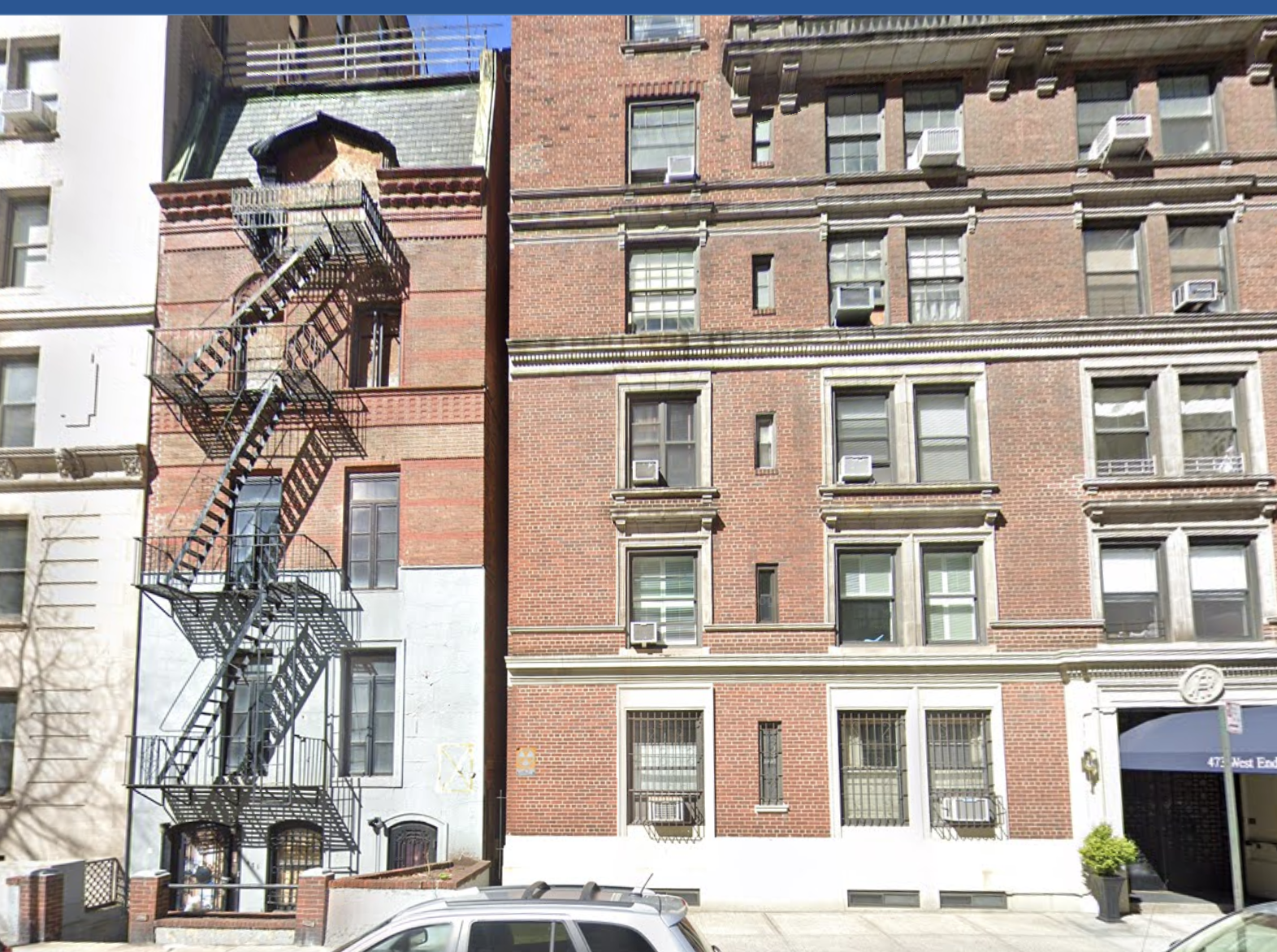
Courtesy of Google maps street view.
While famous for her compositions and performances, through her 59 years living in Manhattan, her other accomplishments include being an educator, published writer, entrepreneur, and conductor.
Katherine career began at 471 West End Ave, Manhattan, in 1962, supporting herself as a freelance fluteist and music teacher. She taught flute at the preparatory division of the Juilliard School and several other small schools, including the Third Street Music School, from 1962 to 1967.
In 1964, she married John Schwab and started a family, having one son. However, according to the family, unmet expectations lead to divorce in 1972. She stayed in New York City to raise her son and build her career.
Between 1969 and 1984, Katherine taught music theory, singing, diction, and flute at the Manhattan School of Music. She recognizes her growth as a composer was largely through self-discovery. Her role as a music theory instructor at the Manhattan School provided her with the opportunity to explore the intricacies of composition and expand her musical repertoire. By analyzing a vast array of music scores, she learned about various compositional techniques. This, combined with her exceptional gift of perfect pitch, helped her understand how individuals interact with and interpret sound. This provided her with valuable insights to advanced her creativity as a composer, where she always striving for originality.
It was during this time she composed Three Carols for choir and flute for Carl Fischer Music Company. Katherine completed her graduate studies earning a Master of Music in Music Theory in 1973. For the subsequent eleven years, Hoover served as a faculty member at the Manhattan School of Music.
Hoover actively supported women's arts organizations, devoting her time and energy to promoting female composers and their work to the public. In 1977, she collaborated with the Women's Inter-Art Center in New York and organized the center's Festivals I, II, and III of Women's Music.
These three festivals showcased the music of 55 historical and contemporary female composers. Clearly defining the role model, she would have appreciated in her youth. Her continuous efforts in this area were evident through her role as the composer in residence for the Fourth Festival of Women Composers at Indiana University of Pennsylvania in 1996.
Katherine founded Papagena Press in 1988, primarily to publish her work. In 1989 Katherine was named Composer of the Year by the New York Music Teachers Association. This same year the New Jersey Chamber Music Society premiered her Quintet (Da Pacem) for piano and strings at Alice Tully Hall in Lincoln Center.
Katherine, Manhattan, NYC
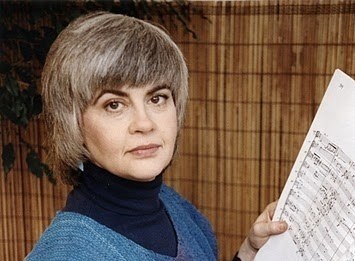
Courtesy of Papagena Press.
Papagena's first publication, Kokopeli (for solo flute) was inspired by the Hopi tribe and the American Southwest. Kokopeli won the Newly Published Music competition for 1991. During an interview Katherine shared, Out of all of my achievements in music, I was overcome with the success of Kokopeli.
Written in New Mexico in 1990, the piece holds international renown and exemplifies the culture of Native Americans and their music. Katherine was overjoyed when one of her peers deemed her composition a "whole new genre of music for the flute".
The early '90s were especially rewarding for Katherine , demonstrating her exceptional versatility. In '93 and '94, Canyon Echos and Lyric Trio won the NFA's annual Newly Published Music Competition. Having attended the Conductors Institute in South Carolina, She becomes active as a conductor leading performances of her work and others in Wisconsin, West Virginia, and New York, and Pennsylvania.
In January 1994, Katherine conducted the premiere of her Night Skies, a 25-minute work for a large orchestra, with the Harrisburg Symphony. Later that same year, Katherine was honored with the Academy Award in Music by the Academy of Arts and Letters.
In the fall of 1995, she traveled to Bratislava for the recording of her Night Skies and Eleni: A Greek Tragedy, then returning to watch her composition, Dances and Variations being featured in the 1996 Emmy-winning PBS documentary titled New Music. Director Deborah Novak traced the commissioning, rehearsal, and premiere of the work at the Kennedy Center. Later that year, Katherine was the Composer-in-Residence for the Fourth Festival of Women Composers at the Indiana University of Pennsylvania.
As a flutist, Katherine has given concerto performances at Lincoln Center and performed with leading ballet and opera companies in New York's major halls. She has played numerous recitals, both live and on radio and television.
Katherine was a member of the American Society of Composers, Authors and Publishers, the International Alliance for Women in Music, the National Flute Association, the Conductor's Guild, and Member Laureate - Sigma Alpha Iota International Music Fraternity.
Her retirement from performance in 2012 gave Kathrine great freedom to work on her poetry, once again demonstrating versatility in her profession. Katherine became a published author in 2015, with her poetry book This Way About being published as an Editor's Choice.
Lifetime Achievement
Katherine was the recipient of the National Flute Association's Lifetime Achievement Award in 2016. According to the NFA, ten of Katherine's pieces received Newly Published Music competition nominations.
Katherine Lacy Hoover passed away in 2018 and is survived by her husband, Richard Goodwin, son, Norman Daniel Schwab and three grandchildren.
Reflections
Infant is Katherine's mother

Courtesy of Papagena Press.
Papagena Press continues with her family has released over 70 titles by Katherine, one title by John Davison and documents more than another 30 of Katherine's works.
In terms of support, she received a grant from the Alice M. Ditson Fund, numerous grants from Meet the Composer; Commissions by Peter Alexander, the New Jersey Chamber Music Society, the Episcopal Diocese of New York, the Huntingdon Trio, The Colorado String Quartet, Pianofest, The Verdehr Trio, Sharon Robinson, The Ariel Ensemble, Brannen-Cooper Fund, Red Cedar Chamber Music, and Duologue, among others; and is a recipient of a myriad of awards from the American Society of Composers, Authors and Publishers.
Katherine's output includes many works for the flute; however, she also wrote for specific performers on other instruments. Two examples are Stitch-te Naku for Cello and Orchestra, for cellist Sharon Robinson and her Clarinet Concerto, and for virtuoso jazz clarinetist Eddie Daniels.
Katherine's tone poem Eleni: A Greek Tragedy, has been performed by many orchestras, including the Harrisburg and Fort Worth Symphonies. Stitch-te Naku, for Cello and Orchestra, written for Sharon Robinson, was presented by the Long Beach (CA) and Santa Monica Orchestras, the Bay Area Women's Philharmonic, and Orchestra Sonoma. Her Clarinet Concerto, written for jazz virtuoso Eddie Daniels, was premiered with the Santa Fe Symphony.
Orchestras, including the Harrisburg, Reno, Richmond, and St. Joseph Symphonies; Chamber groups such as The Colorado and Montclaire Quartets, Dorian, Sylvan and Richards Quintets, and the Verdehr, Huntingdon, and Eroica Trio have featured her work.
The New Jersey Chamber Music Society premiered her Quintet (Da Pacem) for piano and strings at Alice Tully Hall in Lincoln Center. Julius Baker, Eugenia Zukerman, Jeffrey Khaner, Mimi Stillman, Carol Wincenc, and Metropolitan Opera bass John Cheek have also presented her pieces. Pianists Mirian Conti, Joseph Kalichstein, Christopher Taylor, and Anne Marie McDermott have performed her compositions.
The commissioning, rehearsing, and premiere of her Dances and Variations at Kennedy Center are the subject of an Emmy-winning documentary, called New Music, by Deborah Novak. "Classical Pulse," Jan. 1997: critic Leslie Gerber picked Hoover's Quintet (Da Pacem) as one of the five best recordings of 1996. In November of 2002 Ms. Hoover's Requiem: A Service of Remembrance for chorus, soloists, speakers, brass, percussion, and organ (featuring poetry by Walt Whitman) was premiered at St. Peter's Lutheran Church in New York City.
Recordings of her music have been issued on Koch, Delos, Parnassus, Gasparo, Summit, Centaur, Cantilena, Bayer, Boston, Leonarda, Arabesque, CRI, Grenadilla, and Opus One.
During an informal interview about her composing process, Katherine was asked if she had ever experimented with different instruments while composing. She replied that she would create an entire piece within her imagination. When asked how she interpreted her inspirations, she gave an almost synesthesia-like response, stating that [it was a feeling] she could hear the colors within a piece of art or listen to the emotions evoked by literature or the sound of words.